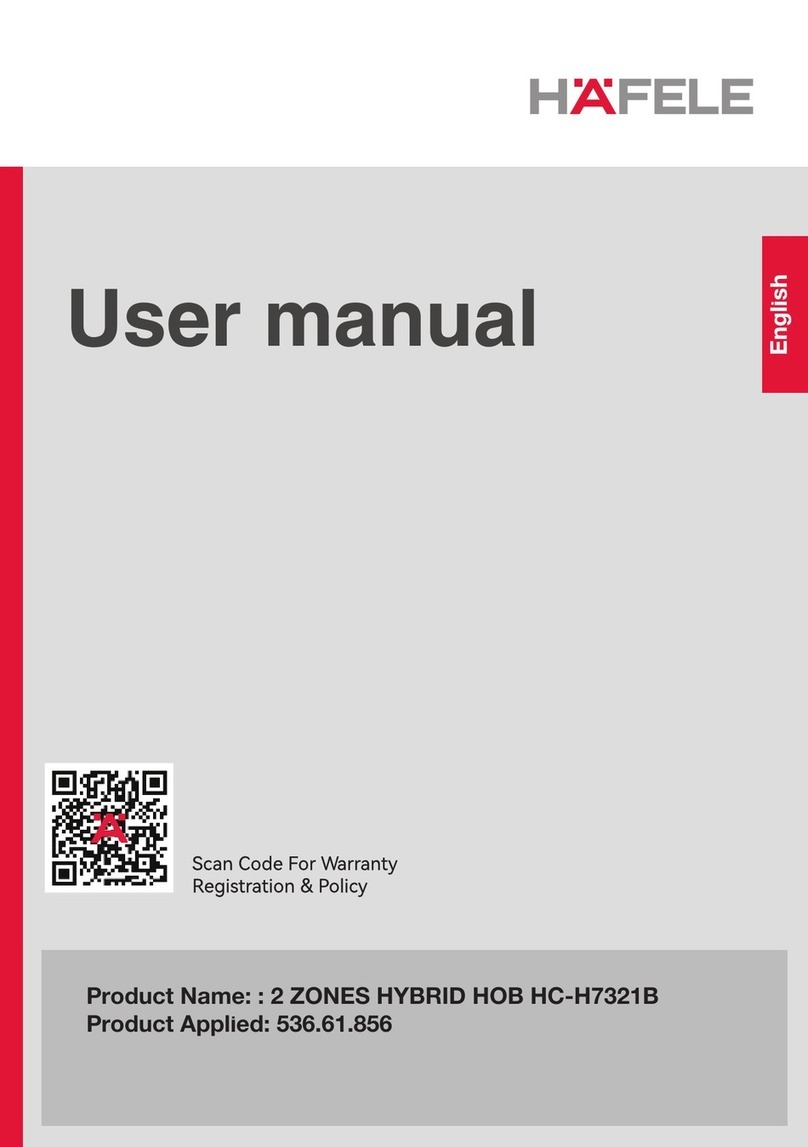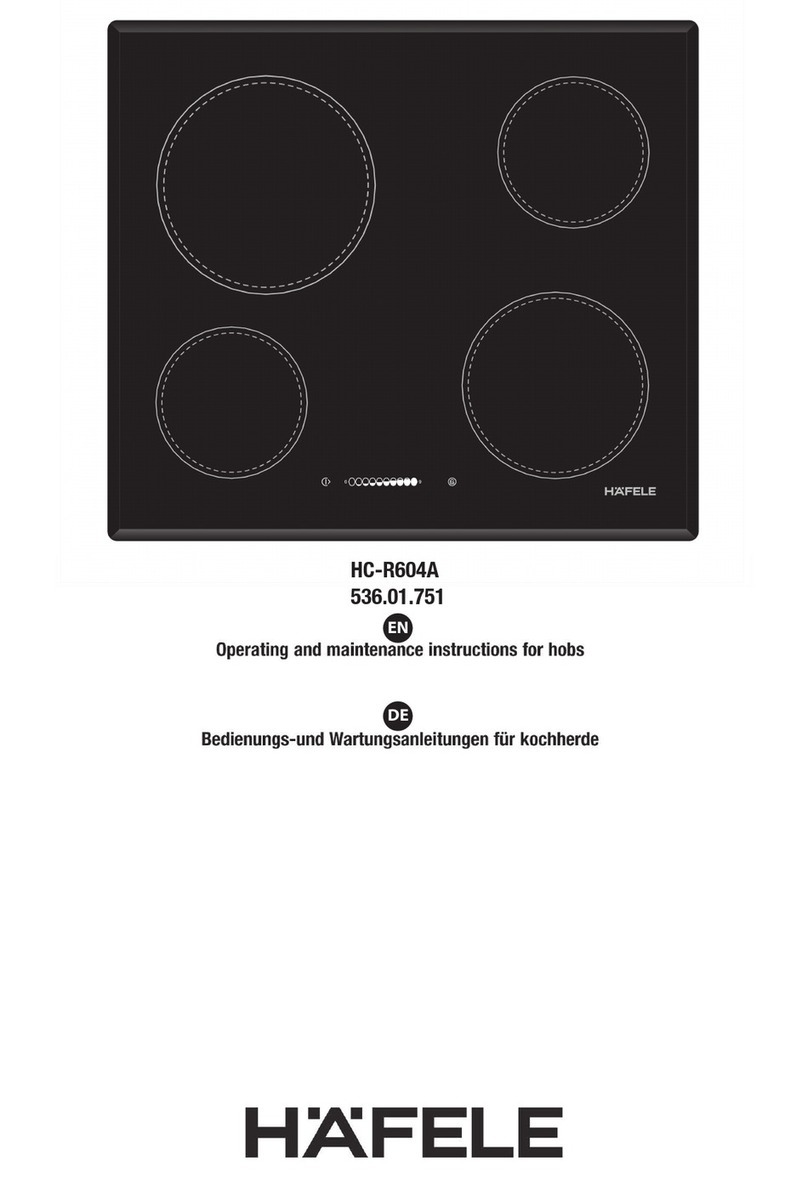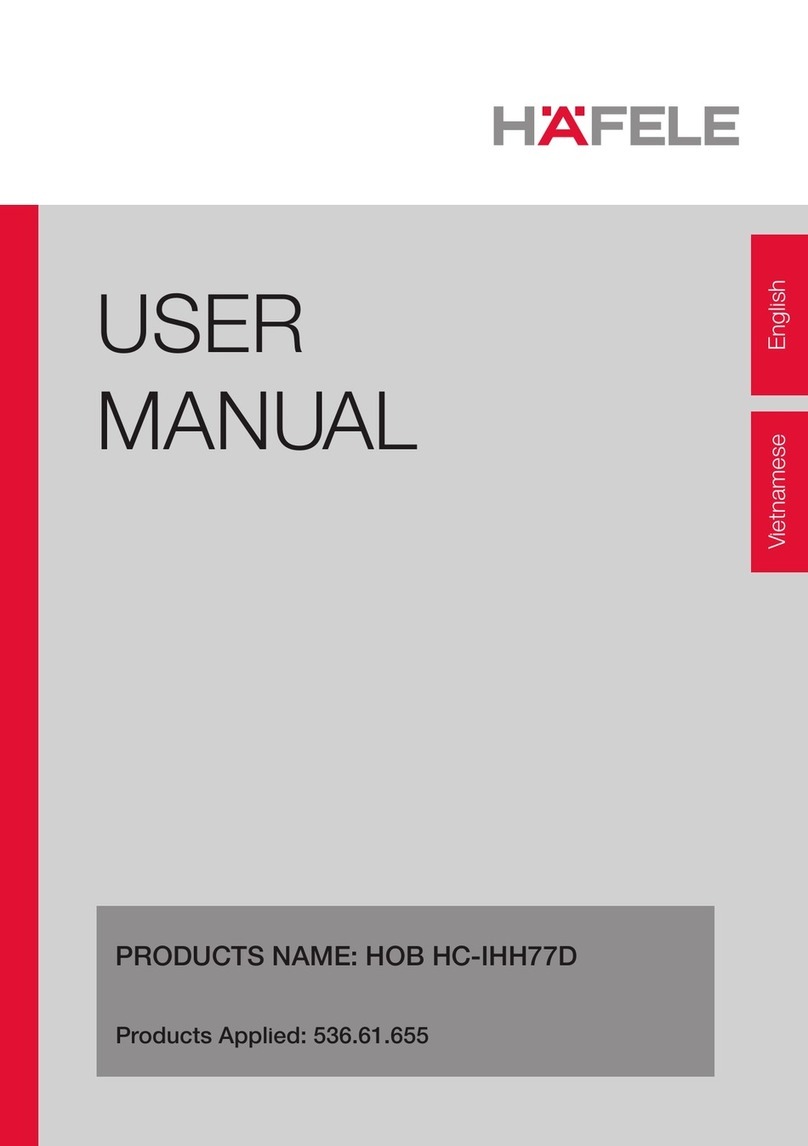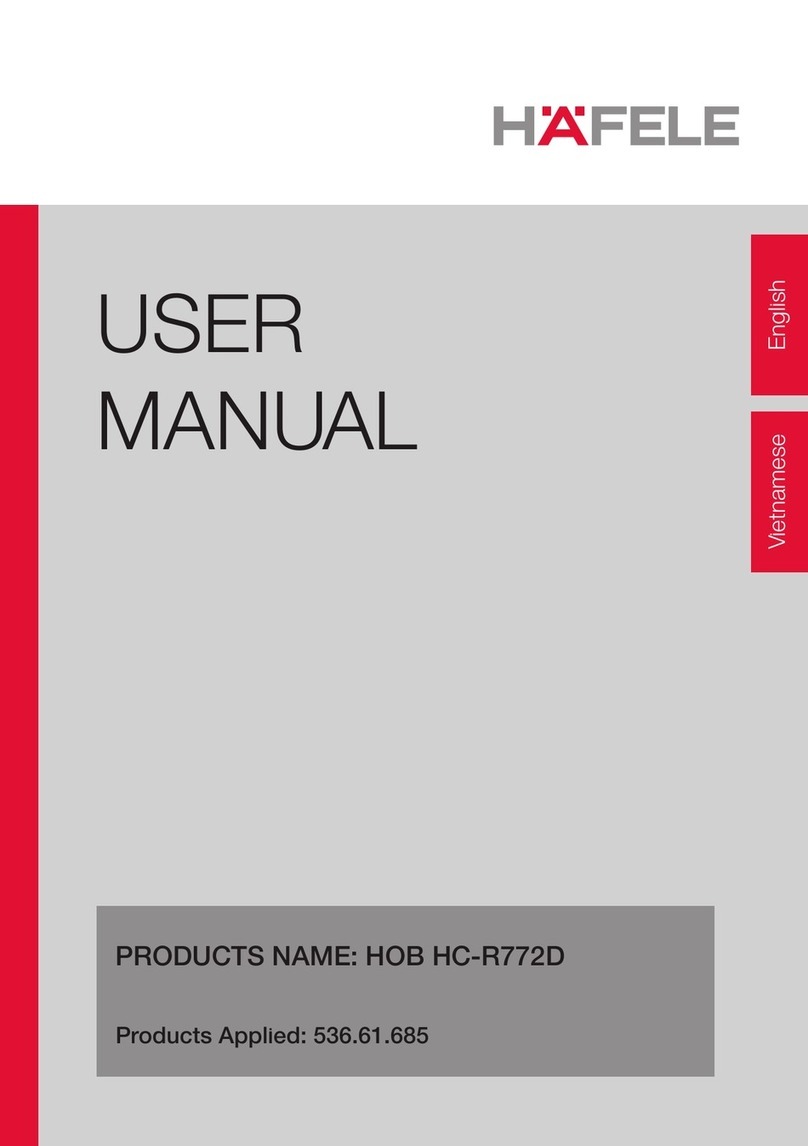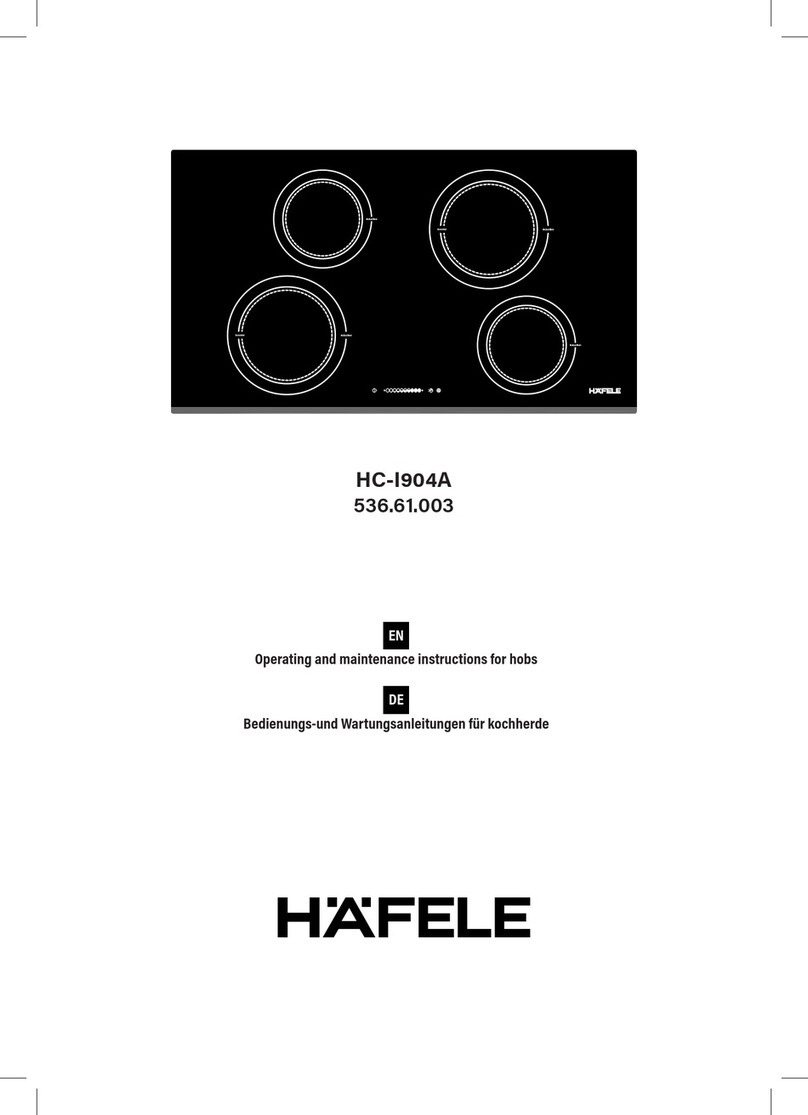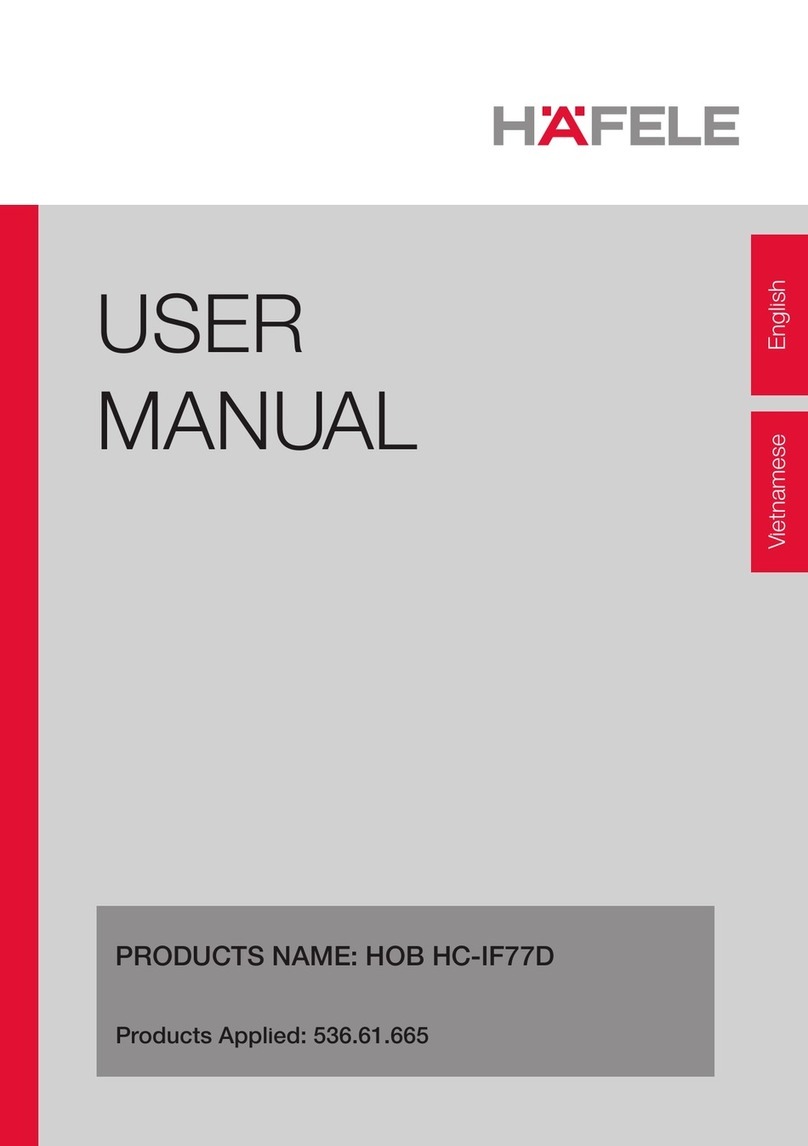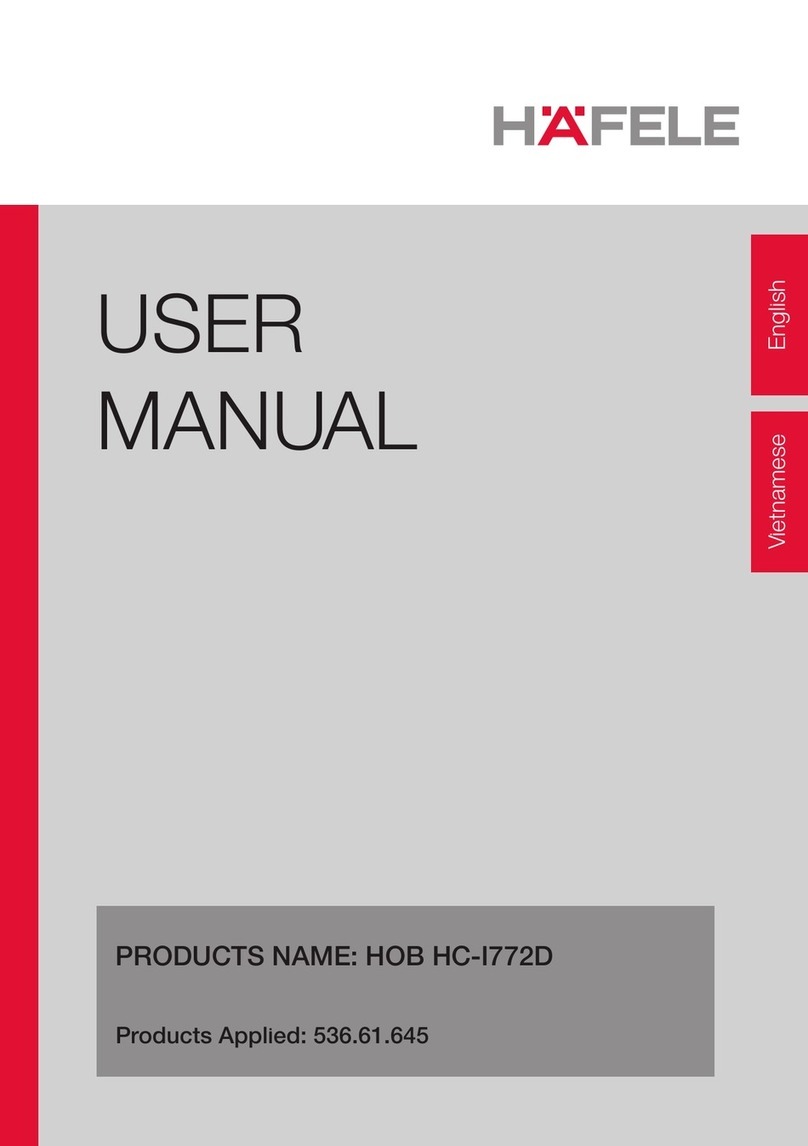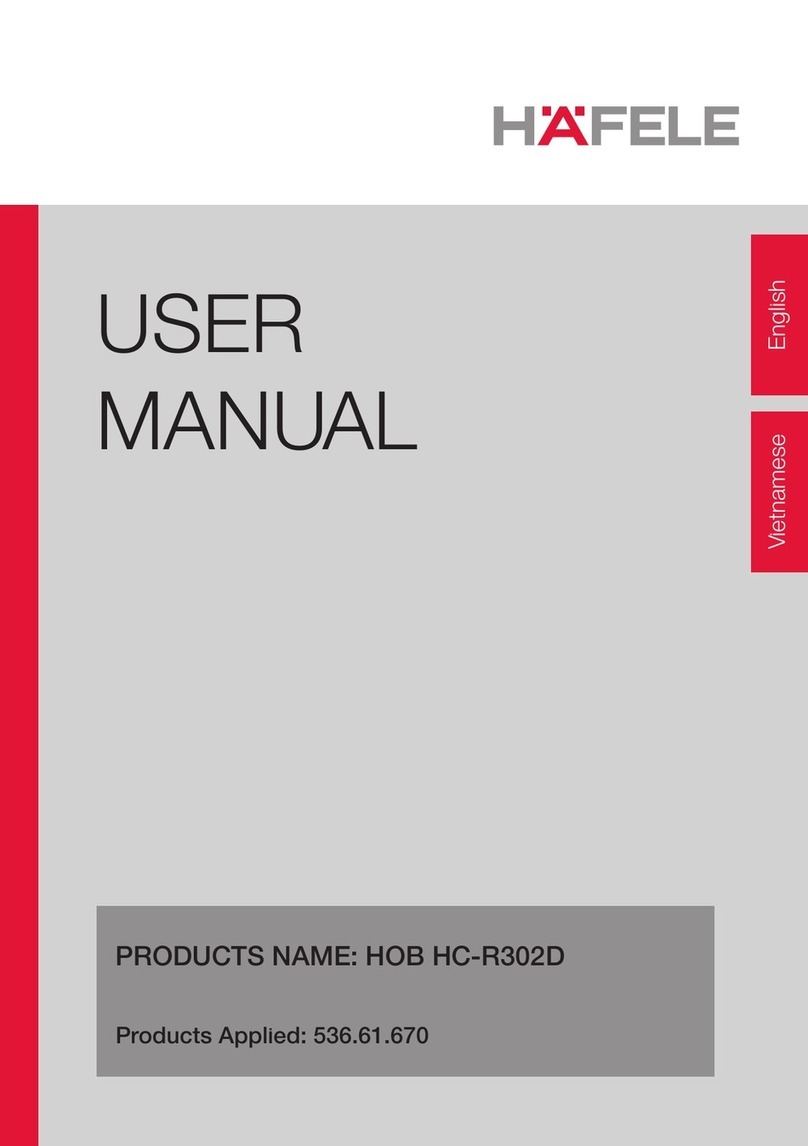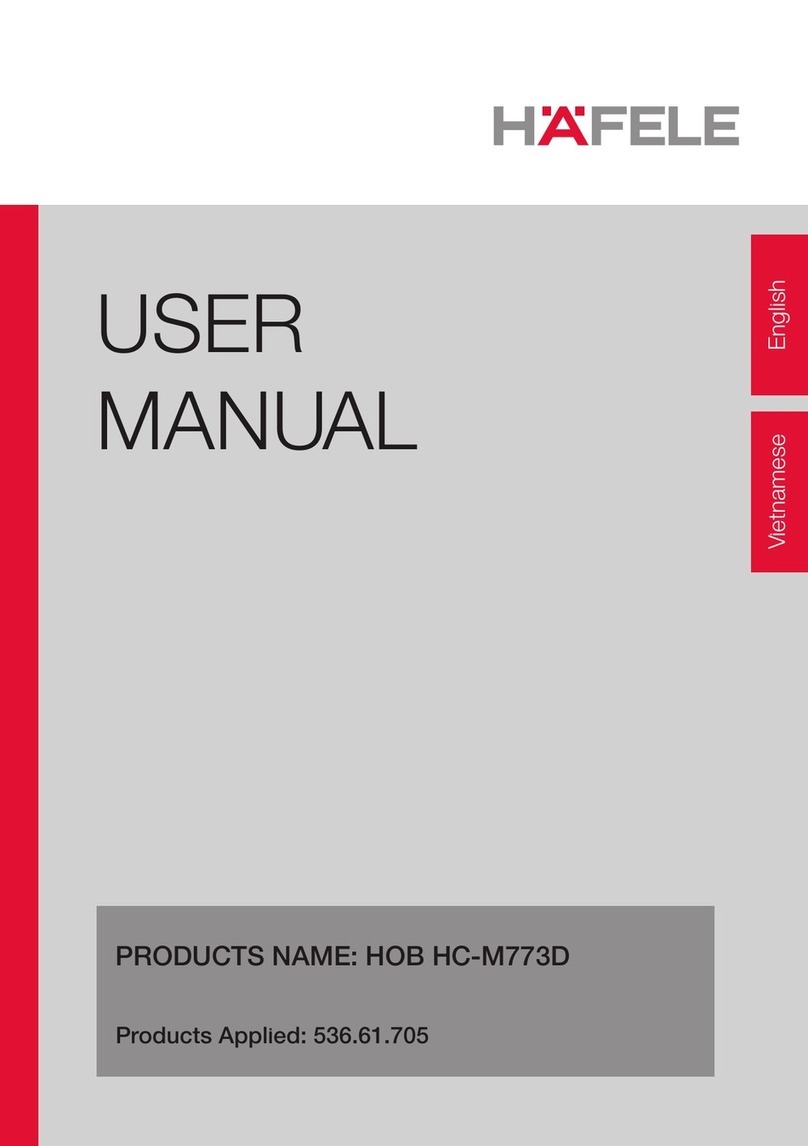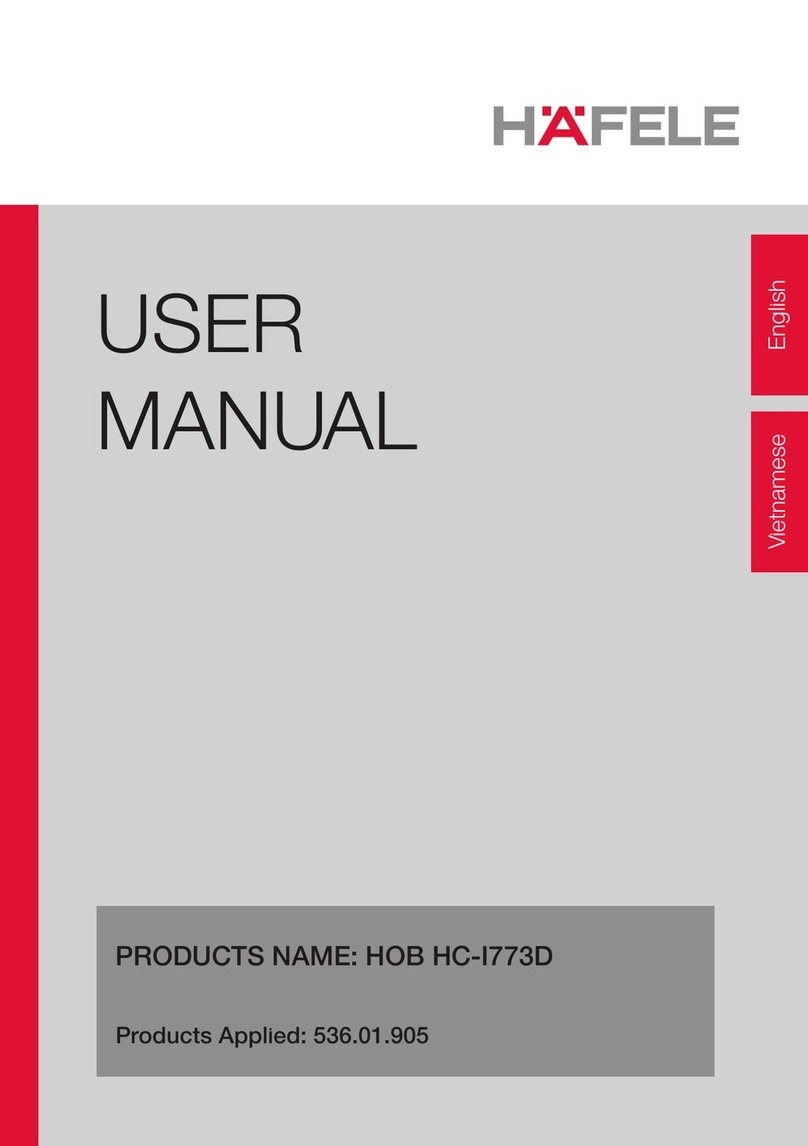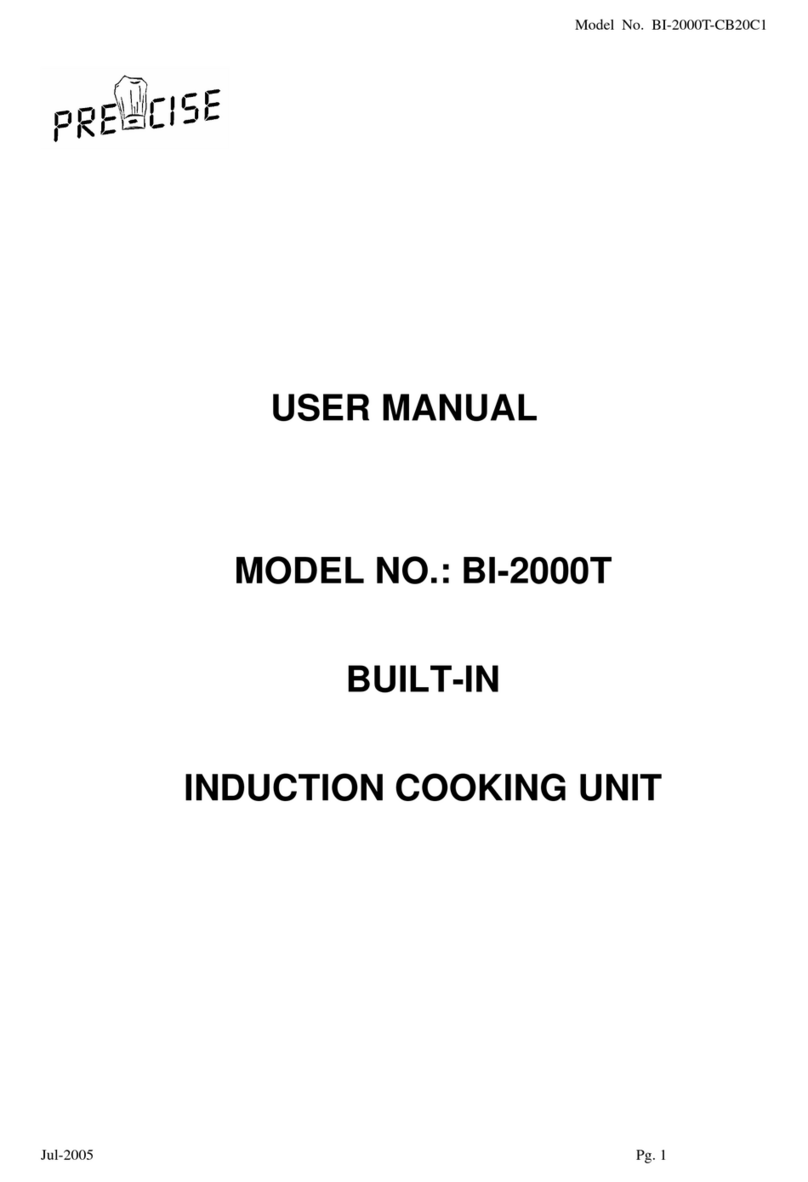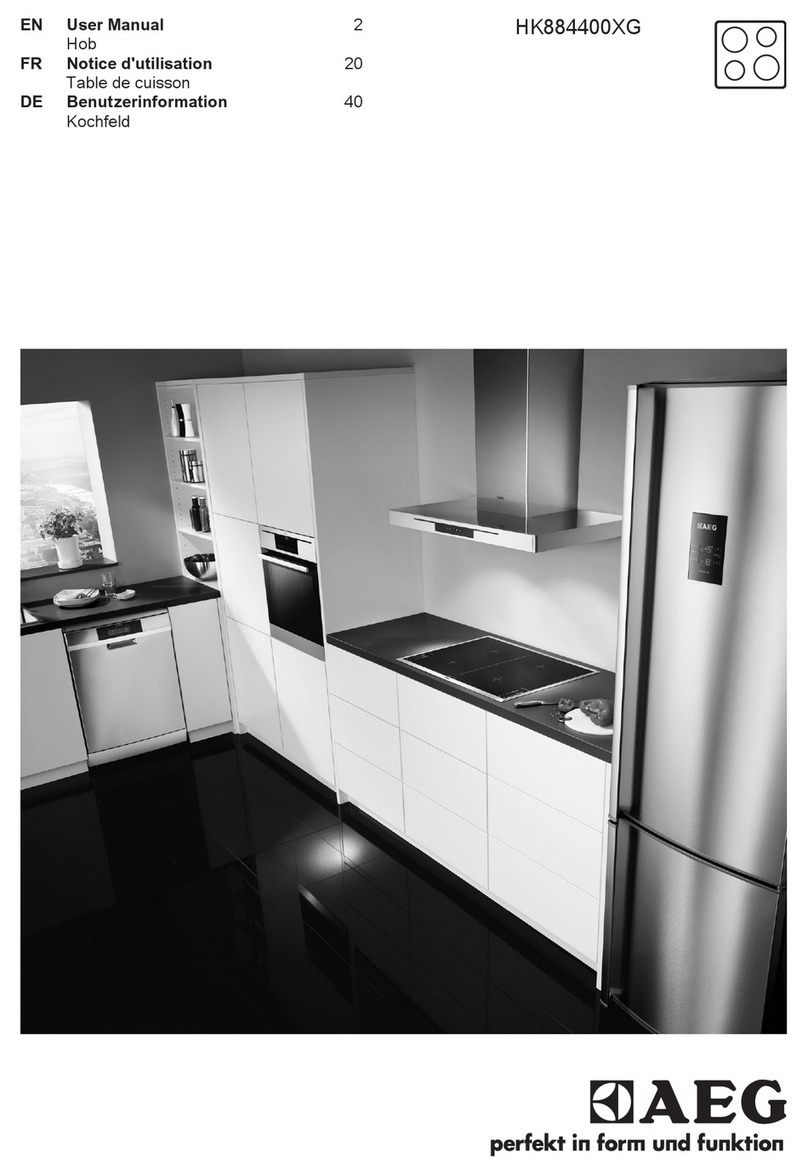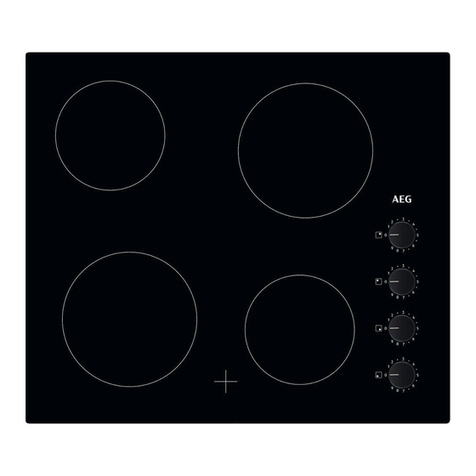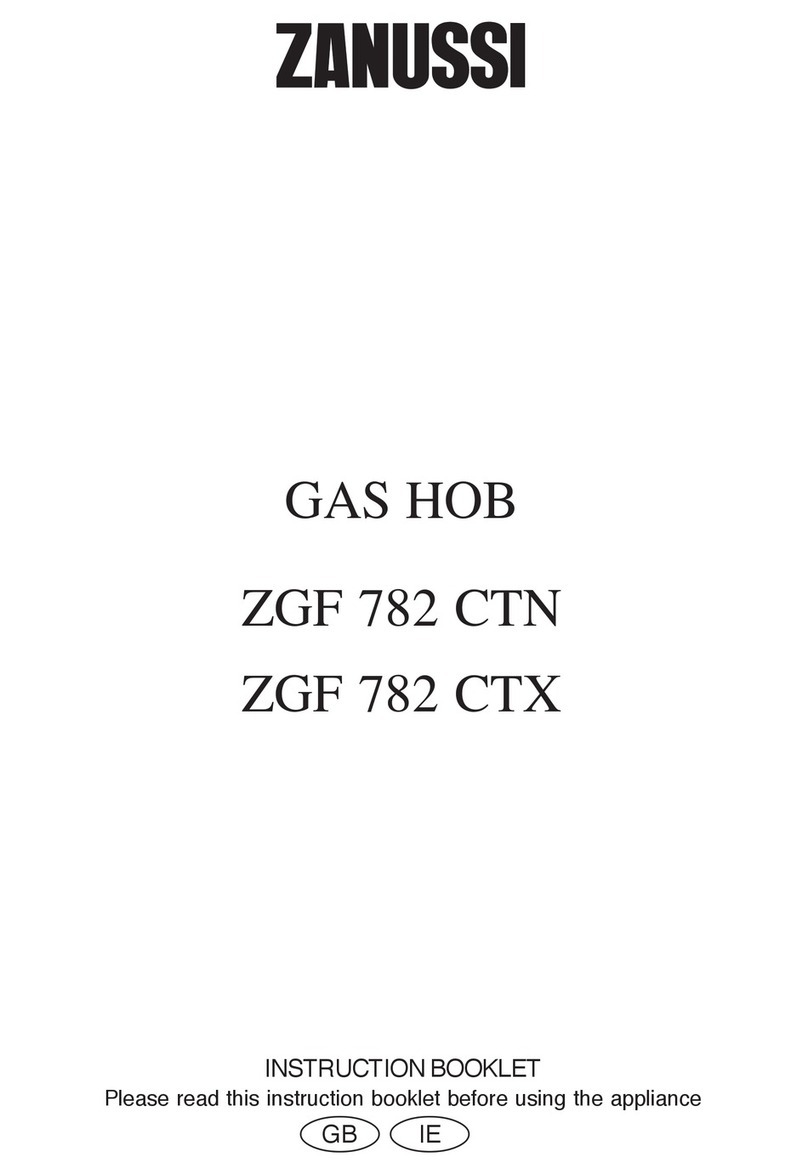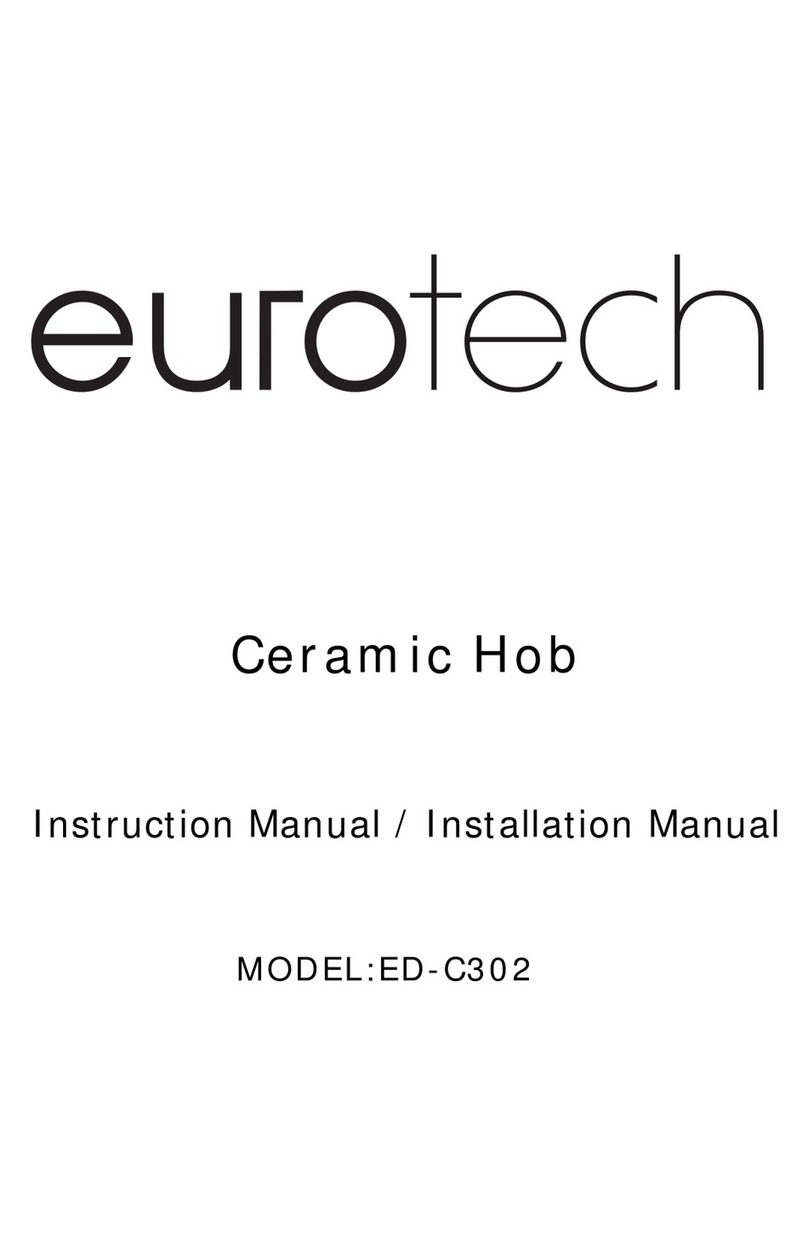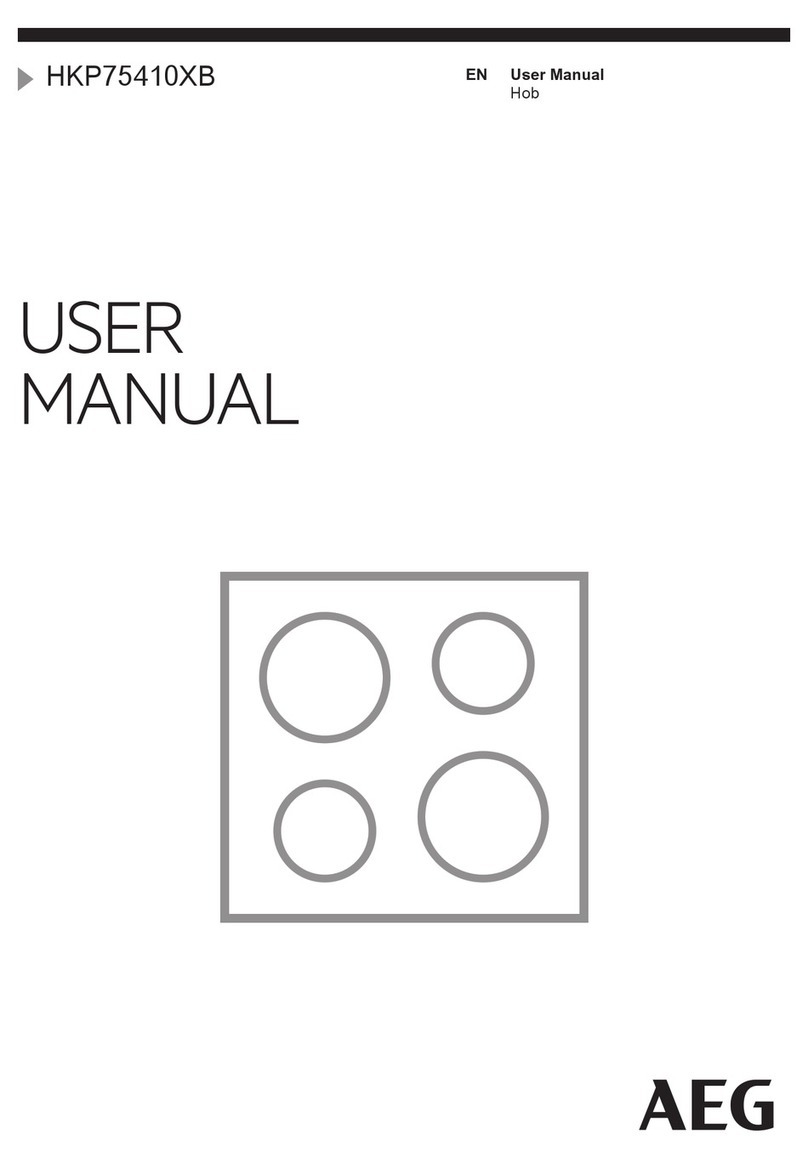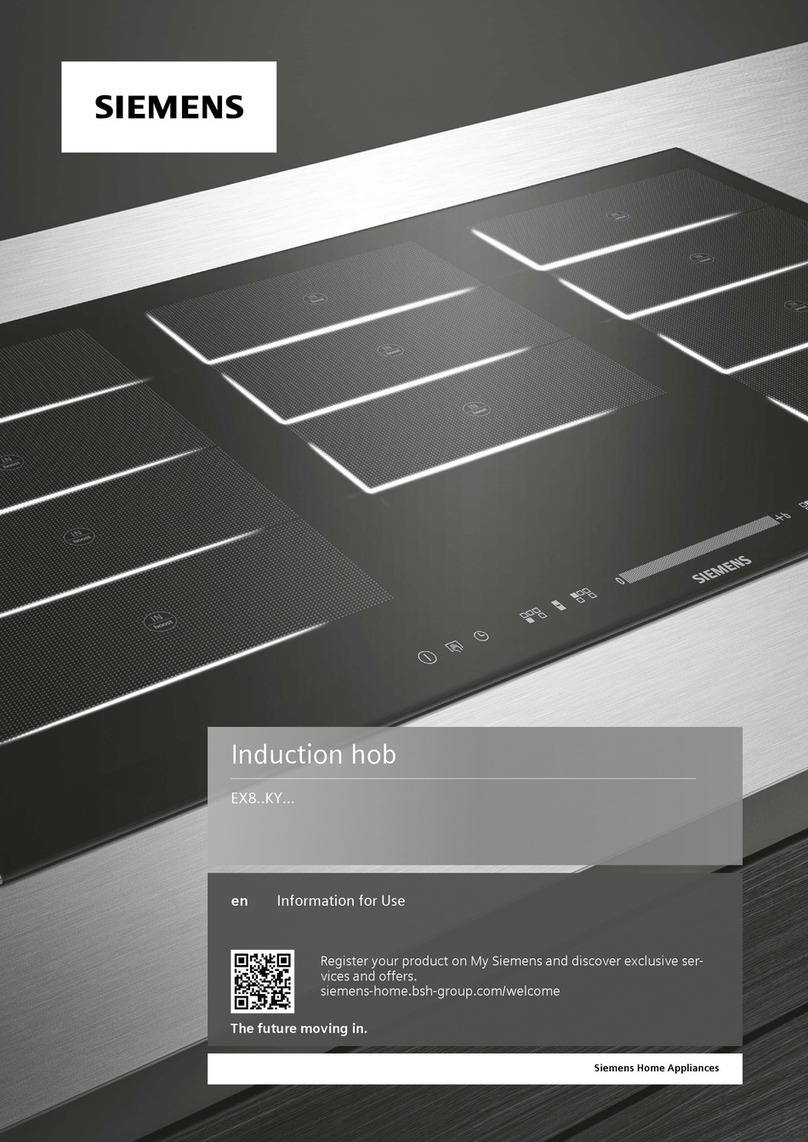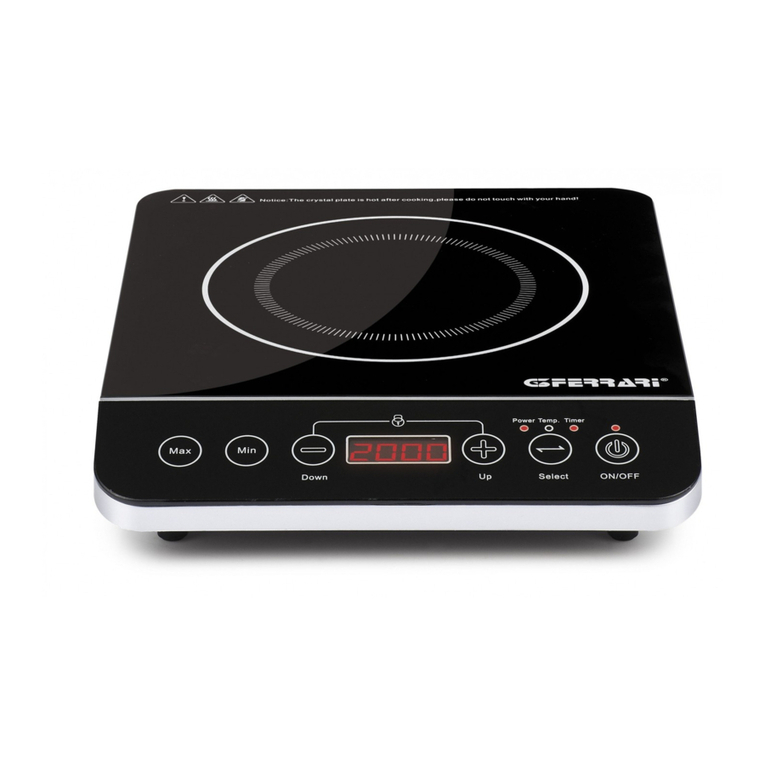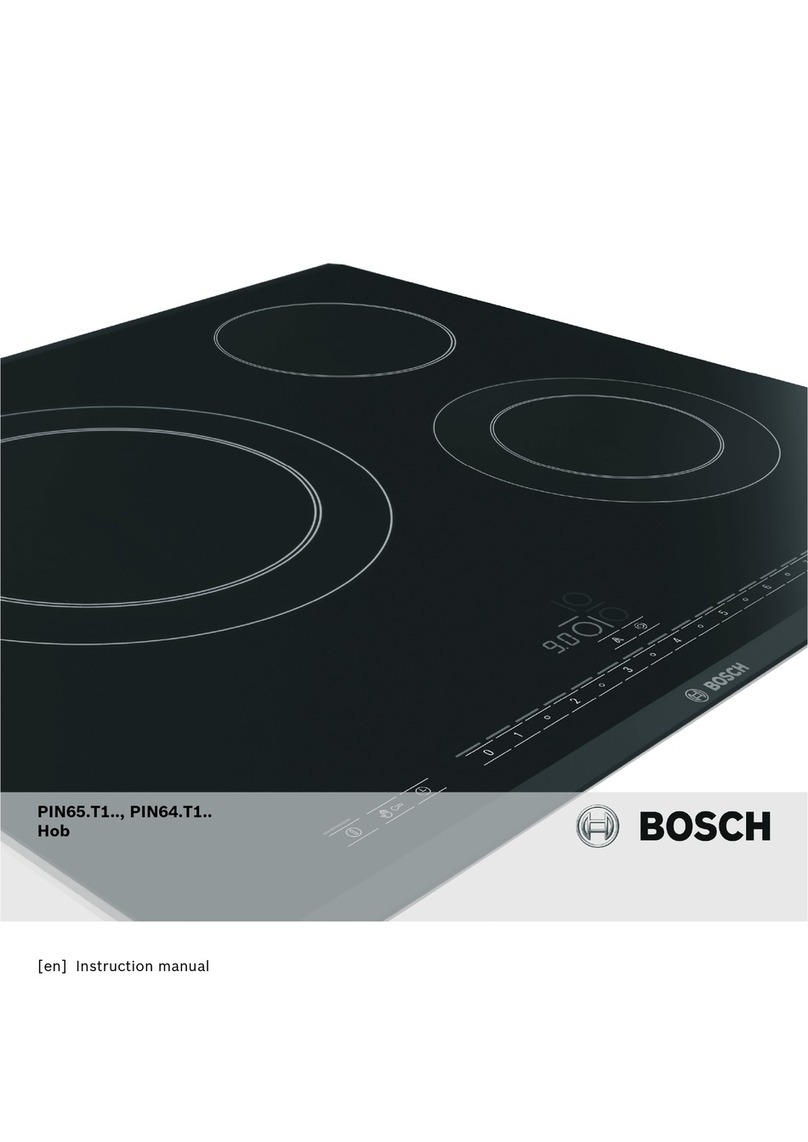
5
SAFETY INSTRUCTIONS FOR USE
•Before using the induction hob for the first time, carefully read its user manual. This will
ensure user safety and prevent damage to the appliance.
•●If the induction hob is operated in immediate vicinity to the radio, television set or other
radio-frequency-emitting device, make sure that the hob’s touch sensor controls op-
erate correctly.
•The hob must be connected by a qualified installer.
•Do not install the appliance near a refrigerator.
•Furniture, where the hob is installed must be resistant to temperatures up to 100●C.
This applies to veneers, edges, surfaces made of plastics, adhesives and paints.
•●The appliance may only be used once fitted in kitchen furniture. This will protect the
user against accidental touching the live part.
•●Repairs to electrical appliances may only be conducted by specialists. Improper re-
pairs can be dangerous to the user.
•●The appliance is not connected to mains when it is unplugged or the main circuit
breaker is switched off.
•●Plug of the power cord should be accessible after appliance has been installed.
•Ensure that children do not play with the appliance.
•This appliance is not intended for use by persons (including children) with physical,
mental or sensory handicaps, or by those who are inexperienced or unfamiliar with the
appliance, unless under supervision or in accordance with the instructions as commu-
nicated to them by persons responsible for their safety.
•Persons with implanted devices, which support vital functions (eg, pacemaker,
in-sulin pump, or hearing aids) must ensure that these devices are not affected
by the induction hob (the frequency of the induction hob is 20-50 kHz).
•Once power is disconnected all settings and indications are erased. When electric
power is restored caution is advisable. If the cooking zones are hot, ●H” residual heat
indicator will be displayed. Also child lock key will be displayed, as when the appliance
is connected for the first time.
•Built-in residual heat indicator can be used to determine if the appliance is on and if it
is still hot.
•If the mains socket is near the cooking zone, make sure the cord does not touch any
hot areas.
•●When cooking using oil and fat do not leave the appliance unattended, as there is a
fire hazard.
•●Do not use plastic containers and aluminium foil. They melt at high temperatures and
may damage the cooking surface.
